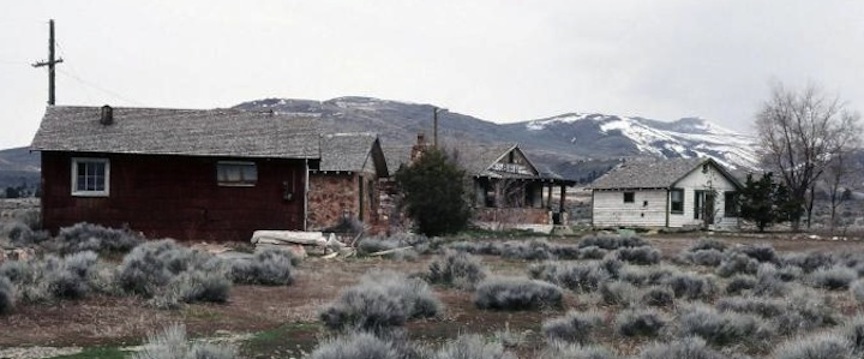We’ve written about the stone houses situated at the Mt. Rose junction just south of Reno (http://nativestonework.com/mt-rose-survivor/). Sadly, those buildings are no more. We have long been interested in the history of the houses and were unable to find the answers to our questions. Thanks a story published in the Reno Gazette Journal (RGJ) on June 10, 2025, we had answers (https://www.rgj.com/story/news/money/business/2025/06/10/nevada-580-south-project-cabin/84121241007/). Yay!

According to the article, in 1936, Otto Herz, along with sons Richard and Harold, not only drilled a well on site, they also erected the stone buildings we remember from our childhood.
Once completed, the cabins – and bar – were known as the Mt. Rose Hot Springs or the Herz Hot Springs. According to the article, “An indoor soaking pool sunk into the concrete floor was filled with that hot spring water for guests’ private spa.” Imagine that! By the time we were old enough to enough a good soak in the soaking pool, the hot springs was no more. Big sigh.
The Mt. Rose area is ripe with geothermal activity. Indeed, to the east of the former Herz Hot Springs is a geyser that used to erupt daily. Sadly, the geyser only erupts infrequently these days.
Back to the marvelous stone cabins. Looking at the photographs, it is apparent that Rhyolite was the primary stone used in construction and that area has an abundance of Rhyolite. We know that Rhyolite was a favorite stone of the area’s Native American stonemasons.
Also, from the both RGJ story and our own inspection of the remaining building, it became clear that members of the Washoe Tribe provided their masonry skills in the construction of the Mt. Rose Hot Springs complex.
The property is to be developed for the 580 South Project. The developers of the project wanted to preserve the rock material from the building. As such, the rock will be donated to Washoe Tribe due to its “cultural significance.”

Now, the developers stated that the remaining building was not structurally sound and had to be demolished for public safety. We disagree, respcetfully. Knowing the work standards of the old timers and the Native American stonemasons (Plus our own inspection of the building), we believe the building could have been saved. The building could have been the centerpiece of the project. The preservation would have brought accolades to the heroes who saved it (the developers), while preserving an important part of Nevada’s history. However, that was not to be. However, thanks to the RGJ article and this site, those buildings will not be lost to time.
